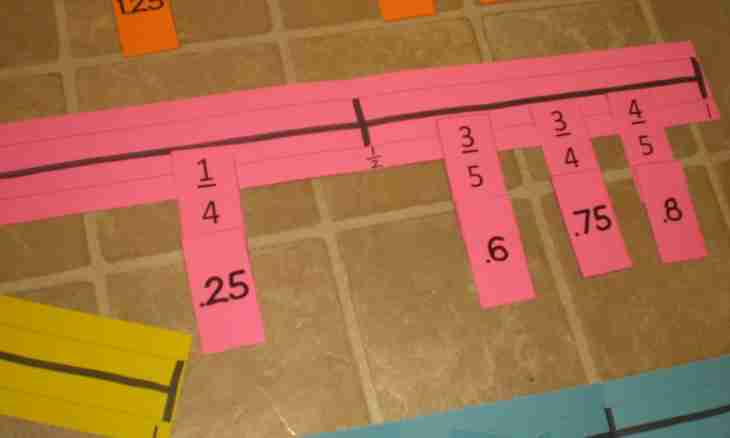All measurements are expressed by numbers, for example, length, the area and volume in geometry, distance and speed in physics, etc. Not always the result turns out whole, fractions so appear. There are various actions with them and ways of their transformation, in particular, it is possible to turn usual fraction into decimal.
Instruction
1. The fraction is a record of a look m/n where m belongs to a set of integers, and n – natural. And if m> n, then fraction is wrong, from it it is possible to allocate the whole part. At multiplication of numerator of m and denominator of n by the same number the result remains invariable. All operations of transformation are based on this rule. Thus, it is possible to turn usual fraction in decimal, having picked up the corresponding multiplier.
2. The decimal fraction is distinguished by a denominator, multiple to ten. Such record is similar to categories of integers, going on increase from right to left. Therefore for the translation of a common fraction it is necessary to calculate such general coefficient for its dividend and a divider that the last contained only decimal, the 100-th, shares thousand, etc. Example: transfer fraction ¼ to a decimal look.
3. Pick up such number that the result of its multiplication by a denominator was multiple 10. Conduct reasonings from the return: whether it is possible to turn number 4 into 10? Answer: no, because 10 is not divided totally into 4. Then 100? Yes, 100 is divided into 4 without the rest, 25 as a result turn out. Increase numerator and a denominator by 25 and write down the answer in a decimal look: ¼ = 25/100 = 0.25.
4. Not always it is possible to use a trial and error method, there are two more ways. The principle of their application almost same, differs only record. One of them – gradual allocation of decimal signs. Example: transfer fraction 1/8.
5. Argue as follows: • 1/8 has no whole part, therefore, it is equal to 0. Write down this figure and put after it a comma; • Increase 1/8 by 10, receive 10/8. From this fraction it is possible to allocate the whole part equal 1. Enter it after a comma. Continue work with the formed rest 2/8; • 2/8*10 = 20/8. The whole part is equal 2, the rest – 4/8. An intermediate result – 0.12; • 4/8*10 = 40/8. Follows from the multiplication table that 40 totally is divided into 8. On it your calculations are complete, the final answer – 0.125 or 125/1000.
6. And, at last, the third method - division in a column. Every time when you have to divide smaller number into bigger, lower "from above" zero (see rice).
7. To turn an improper fraction into decimal, it is necessary to allocate the whole part at first. For example: 25/3 = 8 1/3. Write down the whole Part 8, put a comma and translate fractional Part 1/3 to some of the ways described above. Unfortunately, there is no number, multiple 10 which would get to on 3 without the rest. In a similar situation the so-called period when infinitely repeating figure is written down in parentheses is used: 8 1/3 → 8, …; 1/3*10 = 10/3 → 8.3 …, rest = 1/3;1/3*10 = 10/3 → 8.33 …, rest = 1/3; etc. indefinitely. Answer: 8 1/3 = 8.3 ….3 = 8,(3).

